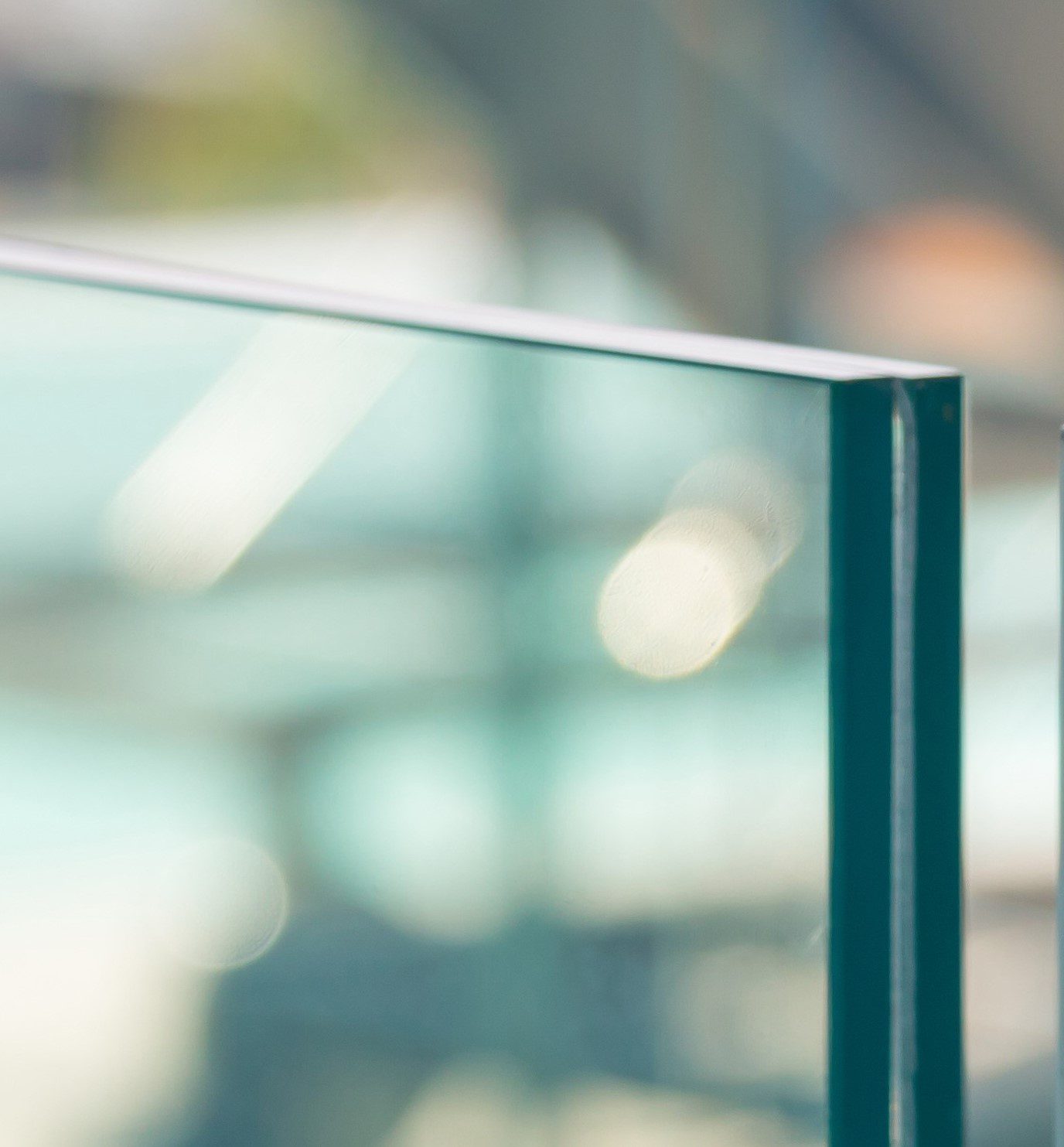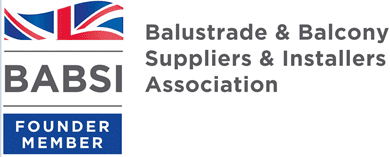Laminated Glass
Product Description
Our standard laminated glass is available in five thickness options, ranging from 6.4mm to 12.8mm, comes in clear laminate or acoustic laminate variations, and can be cut to size according to the measurements you need.
£43.24 – £184.80
- This product is manufactured in the UK.
Description
Here at Express Toughening, our laminated glass supplies consist of two panes of float glass (standard annealed glass) of the same thickness with a special EVA interlayer compressed between them. Ethylene vinyl acetate is a copolymer resin with high tensile strength and transparency, allowing uninterrupted light transmission through the glass panes.
Though the ordinary glass is less resilient against cracking if it isn’t toughened, the plastic interlayer maintains its integrity if the float glass on either side breaks. The plastic won’t break without extreme force, ensuring that the glass will hold together in the event of breakage.
Laminated glass is therefore much safer than single glazing that can shatter into glass fragments and leave openings unprotected, leading to a higher risk of injury. Should the standard glass on one side or both sides break, there is a reduced risk of injury, as the broken pieces will be held in place by the bonded plastic interlayer instead of falling in all directions.
This means that it is both safe and secure to use laminated glass in windows and doors, either as low-level glazing in a domestic building or in commercial shop fronts or barriers, for example.
Our high-quality laminated glass is fully functional and low-maintenance, whilst allowing you to benefit from the modern upscale aesthetics that it brings to any establishment.
Order online from Express Toughening today and we guarantee that you’ll be satisfied with your customised end product – no matter which of our glass products you opt for.
Custom Laminated Glass
When ordering laminated safety glass from us, you’ll have a choice of thicknesses to suit your needs, including 6.4mm, 6.8mm, 8.8mm, 10.8mm, or 12.8mm.
Depending on your project specifications, we can produce sheets of laminated glass up to 3,000mm in width to suit your exact requirements.
As standard, edges are arrised on this product to remove sharp corners, with a polished finish.
We can also customise your laminated glass by creating internal cut-outs, notches, or hinges upon request, in addition to drilling holes or forming radius or dubbed corners.
This gives you the flexibility to fit your custom laminated glass around specific features it may need to accommodate, wherever you need to install it.
You’ll also have the option of adding a protective polymer coating to your laminated glass, which helps to repel water and everyday grime for much easier maintenance.
Use the four-step order system on this page to select your glass specifications and receive a quick and easy quote for your bespoke design.
Add the final product to your basket and check out to pay for your order and arrange delivery, then we’ll get to work making your laminated glass to order. Manufactured in the UK, express delivery is available for our safety glass products, which come with polished edges included.
Looking for more information or need help with ordering bespoke laminated glass? You can always ask the Express Toughening team – just get in touch. You can contact us by phone or email, and we’ll do all that we can to assist you with your order of safety glass.
With benefits such as heat resistance and lower risk of damage or harm, plus extra qualities like noise reduction and optional features like dubbed corners available, we can supply safety glass to the exact requirements you need.
Tempered Safety Glass
You can follow the same simple process to order toughened laminated glass if you’re looking for this instead. Toughened and laminated glass uses two pieces of tempered glass instead of normal glass for increased safety, making toughened laminated glass several times stronger than laminated glazing with standard glass.
Undergoing the laminating process after the toughening process makes the end product many times stronger against breakage than normal glass. Toughened laminated glass is ideal for enhancing safety and security in any window or door in most buildings and environments.
If you require strong glass with noise reduction properties, consider acoustic laminated glass. This laminated glass offers the benefits of improved sound insulation, reducing noise pollution with increased insulation by using thicker glass panes. Acoustic laminated glass uses a polyvinyl butyral (PVB) resin layer rather than EVA, which also offers optical clarity.
Similarly, if you want to order glass for flooring, please view our page for walk-on laminated glass. This type of pressure-resistant laminated safety glass is ideal for floors, stairs, and skylights, among many other architectural applications for toughened glass.
These glass types have even greater impact resistance and heat resistance, helping to protect people inside and outside of buildings and create professional-looking glass installations at the same time. Thanks to our wide range of different glass types, you’re sure to find the safety glass you need with us.
Whichever high-quality laminated glass pane system you need, whether float glass or tempered glass, we can provide a combination that offers the level of protection you’re looking for. Always with a polished edge as standard for a safe and attractive finished look.
Frequently Asked Questions
How is laminated glass different from toughened glass?
Though you may see the terms toughened glass and laminated glass being used to refer to the same sort of products, the truth is that these are actually different types of reinforced glass.
Toughened glass is created by tempering standard annealed glass through a fast heating and cooling process, which is strengthened by balancing the tensile stresses within the glass.
On the other hand, laminated glass enhances the strength of standard glass by sandwiching two sheets together. In some cases, two panes of toughened glass may be used, which forms toughened laminated glass – often the source of confusion over these terms being the same.
Toughened glass is safer than standard glass because it’s strong enough to resist impacts, but if it does break under extreme stress, it falls into blunt-edged pieces like pebbles.
However, if the glass was acting as some kind of barrier, this can leave an unsafe gap – which is where laminated glass comes in. When laminated glass is used, the panel will stay in place even if one or both sides shatter, because of the layer in the middle bonding them together.
What holds laminated glass together?
Laminated glass features two separate panes of glass that are securely bonded to an interlayer in between them using pressure and heat. This interlayer is typically made of a transparent plastic film, often EVA (ethylene vinyl acetate).
Though thin and barely noticeable to the eye, this central layer secures the two pieces of glass in place and helps to absorb impacts. The multi-layer structure ensures that if one or both glass panels breaks from a hard impact, they will remain attached to the interlayer and won’t fall apart.
This gives you time to organise replacement laminated glass without leaving a safety risk where someone could fall.
Standard laminated glass is strong by itself, but in settings where glass breaking into loose pieces would pose a higher risk of causing injuries, it’s best to use toughened laminated glass to make sure the glass layers are as resilient as possible.
This applies to applications such as staircase or balcony balustrades, windows, doors, skylights, or shopfronts.
Can laminated glass help with noise reduction?
While laminated glass is well-known for not falling apart if it breaks, the nature of its construction also means that it has an additional advantage over toughened glass – the extra layers make it harder for sound vibrations to travel from one side to the other, thereby reducing noise transmission.
The increased insulation means that laminated glass is better at muffling sounds than a single pane of glass, but for the most efficient sound dampening effect, it would be best to use acoustic laminated glass designed for this purpose.
This type of acoustic glass usually features a thicker PVB (polyvinyl butyral) interlayer to improve sound insulation alongside impact resistance, without reducing light transmission.
Not only does this help to decrease noise pollution from external environments, but the higher insulation level also enhances internal thermal efficiency, which can help to reduce energy bills at the same time.




